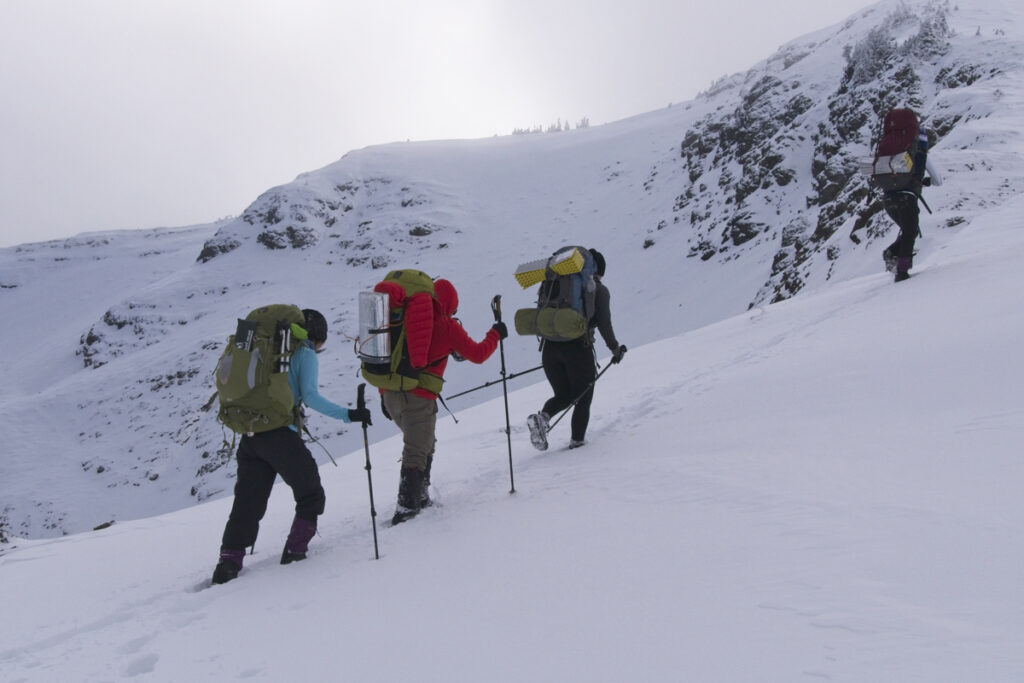There are a lot of reasons to reduce pack weight, such as comfort, safety, speed, and pack durability. Studies have indicated that hikers with lighter backpacks are more likely to complete long journey goals and with fewer injuries. With a lighter backpack, you can more easily avoid back injuries as well as injuries from losing your balance. Many backpacks are only rated for 30–40 lbs carrying capacity, so the further you can reduce the weight, the less likely there will be a pack failure.
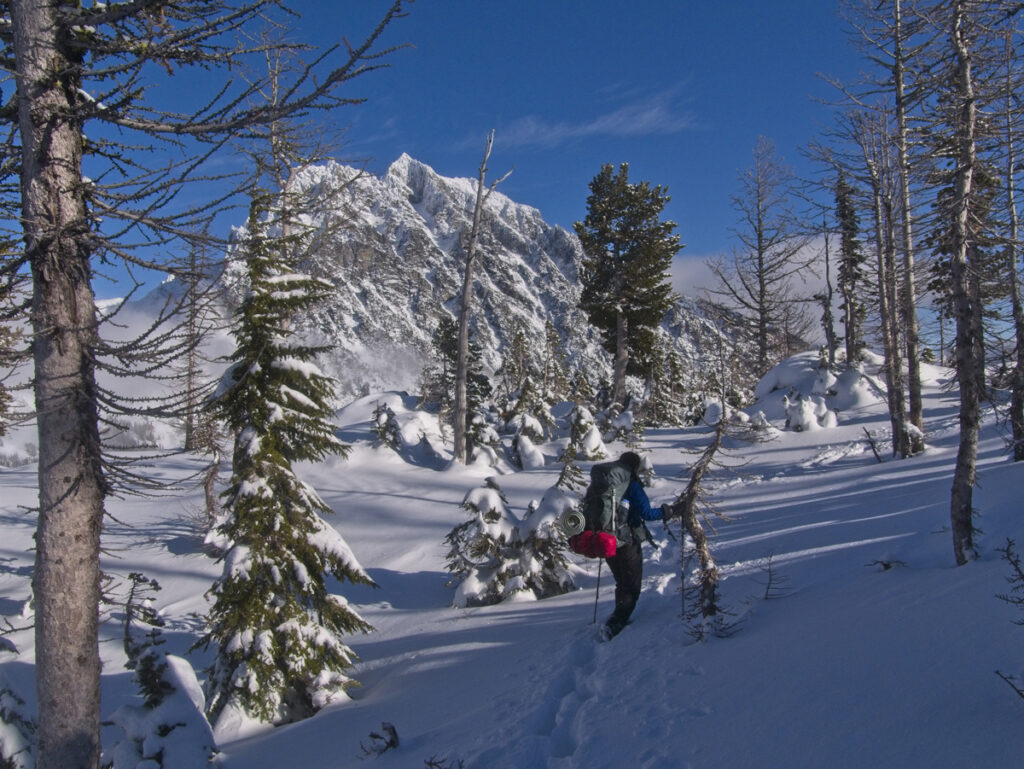
One view is that your pack weight should not exceed 20% of your body weight, which would be 30 lbs for a 150 lb person. If you are 130 lbs and find yourself carry a 45 lb pack, you are way over your 20% recommendation. If you weigh 110 lbs, you may not be able to reach the 20% mark (22 lbs), but the closer you get to it the better. Even if you weigh over 150 lbs, there is little reason to carry a 45 lb pack on a 2–3 day winter trip.
From what I’ve seen, three-season hikers gearing up for a winter trip tend to end up with packs in the 40 lb range and some beyond even that.
Getting from a 40 lb backpack to a 30 lb backpack
While comfort is important, so is functionality. For winter backpacking, you need a pack that can carry up to 40 lbs with a 58–70 liter capacity (40 lbs to avoid being at the limits of your packs capacity). You need a tent that can cope with conditions such as winter wind and blowing snow. You also want a sleeping bag that will keep you warm in cold conditions. All this raises the questions: Can you get a durable backpack with sufficient capacity, a 4-season tent, and a zero-degree sleeping bag that is lightweight? The answer is “yes.”
The Big Three
If you are serious about getting your winter backpack down from 40 lbs to 30 lbs, start with “the big three.”
Your backpack, tent, and sleeping bag are often called “the big three” because these are the heaviest items you take. The “big three” concept is based on three-season backpacking. Winter backpackers often end up carrying snowshoes which usually weigh around 4 lbs. But that aside, the “big three” concept is still useful.
The Three-Pound Rule
The three-pound rule says that none of the big three should exceed 3 pounds. That is, the closer each of the big three items is to 3 lbs or below 3lbs, the better.
The “Big Three Three-Pound Rule” chart below shows gear examples of the big three. You can see gear choices make a big weight difference. The first column is the gear I use on a typical winter backpacking trip, which is included just to show that I’m following the three-pound rule for my trips and it works for winter conditions in the Pacific Northwest. The first three columns show examples following the three-pound rule and all using different gear. The last three columns show “big three” examples that don’t follow the three-pound rule. As you can see those choices are about 5–7 pounds heavier.
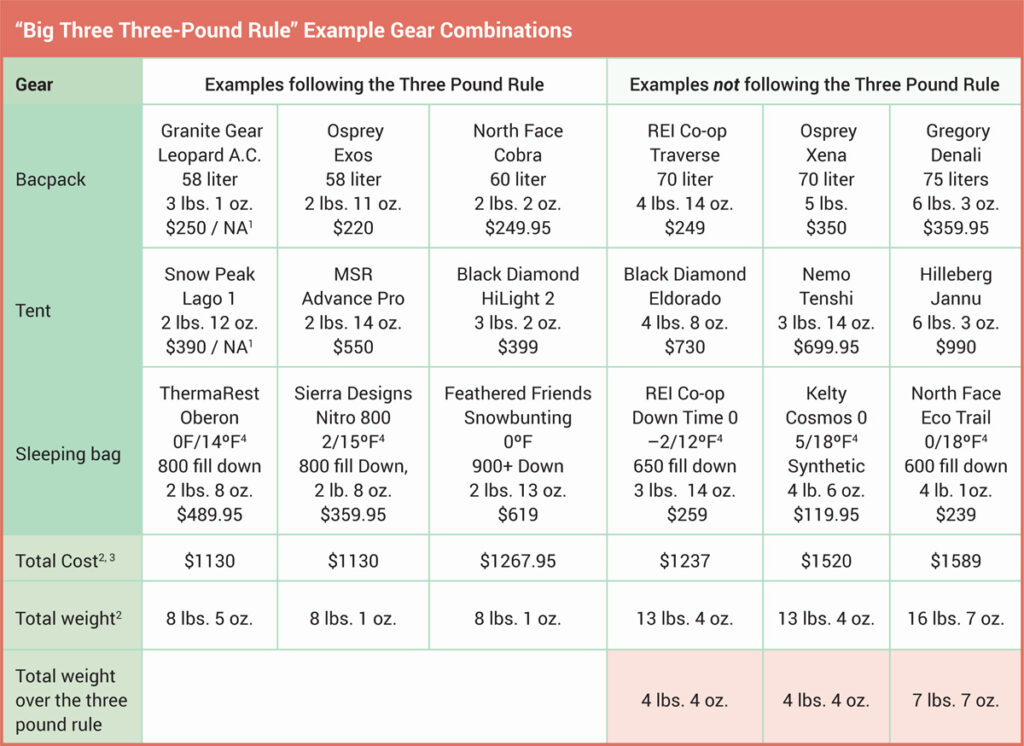
Following the three-pound rule can cut 5–7 pounds off your overall pack weight. If you have a 40-pound pack and you aim to get it to 30 pounds or below, following this rule will likely take you halfway to your goal.
Beyond the Big Three
Now it is time to dive into the fine details. The next step is to go through your pack item by item to cut off the next 5 pounds. This will be achieved by small amounts that gradually add up. Start by following these steps:
- Make a complete list: Put together a complete list of what you will be taking.
- Create two categories: Separate everything you will carry in your pockets or apart from your pack (transceiver, cell phone, wallet, clothing, etc.).
- Weight everything: Weigh every item that goes in your pack or may go in your pack (stove, cook set, first aid, base layer, gloves, air mattress, sleeping pad, headlamp, etc.).
- Remove anything unnecessary. Check your gear list against a light-weight winter gear list such as this one: https://winterbackpacking.com/a-winter-backpack-under-30-lbs/) and consider removing items not found on it.
- Compare weight options: Check the weight of each item of your gear against a light-weight winter gear list (https://winterbackpacking.com/a-winter-backpack-under-30-lbs/) and note the difference for each item. Does the total difference add up to five or more pounds?
- Replace heavy items: Gradually replace heavier items with lighter items.
- Determine your total “base weight.” Your base weight is everything excluding consumables (fuel, water, and food). The weight of consumables will vary depending on the length of the trip and change during the duration. The goal is to reduce the base weight to a point that allows the addition of consumables to not exceed a total weight of 30 lbs.
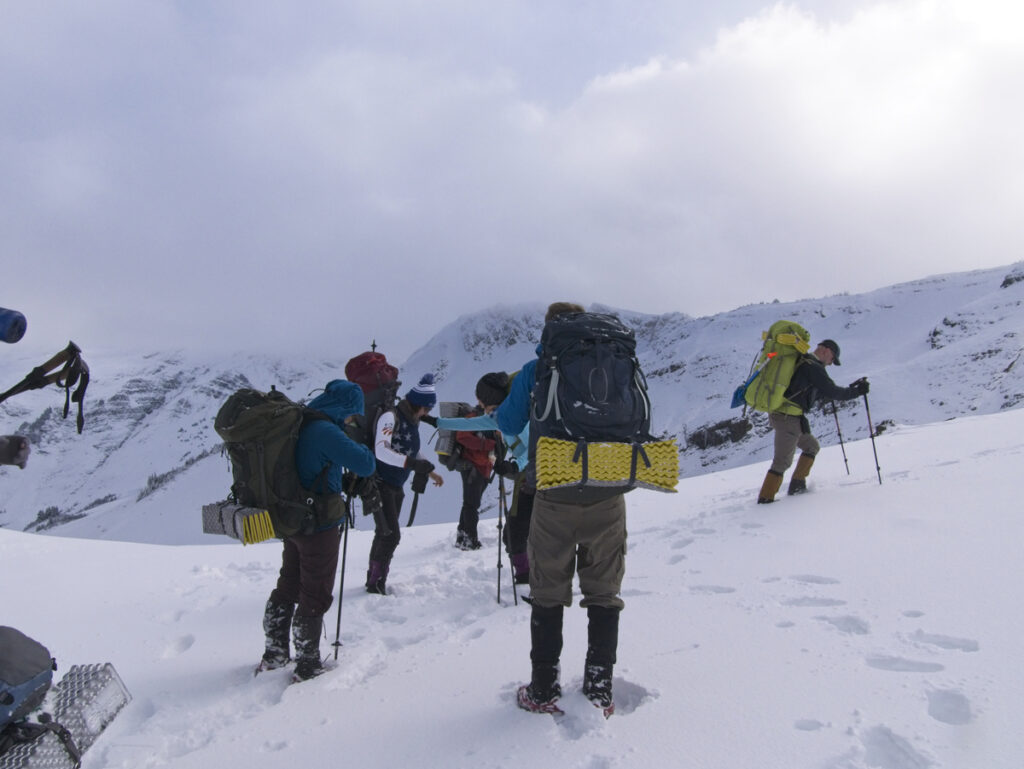
Helpful scales for weighing gear
Get a small cooking scale and weigh each item in your pack. Record the weights on a list. You don’t need to make counting grams an obsession, but if your pack is needlessly heavy doing this at least once is helpful.
Doing this may help you find 5–10 pounds of unnecessary weight that can be eliminated. Pack everything in your pack and use a digital hanging scale to weigh your final total.
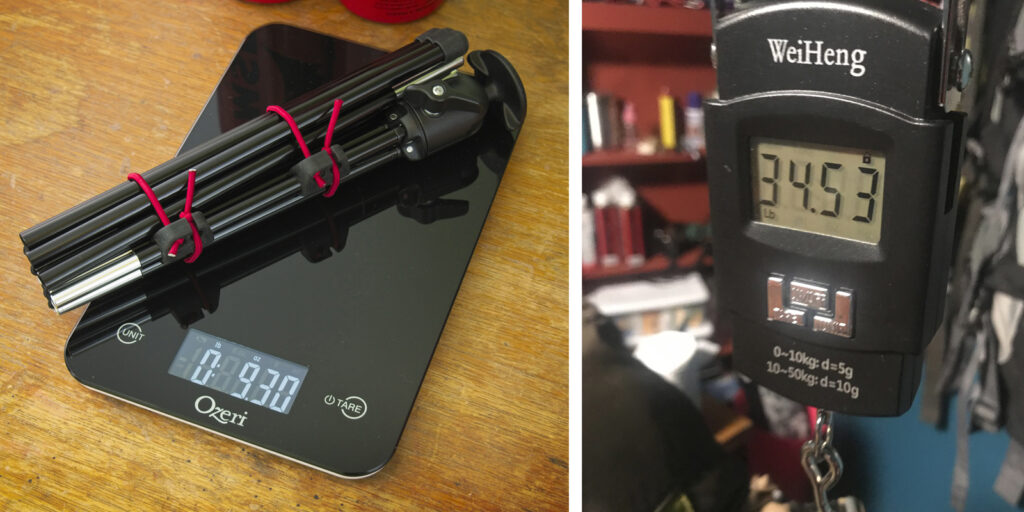
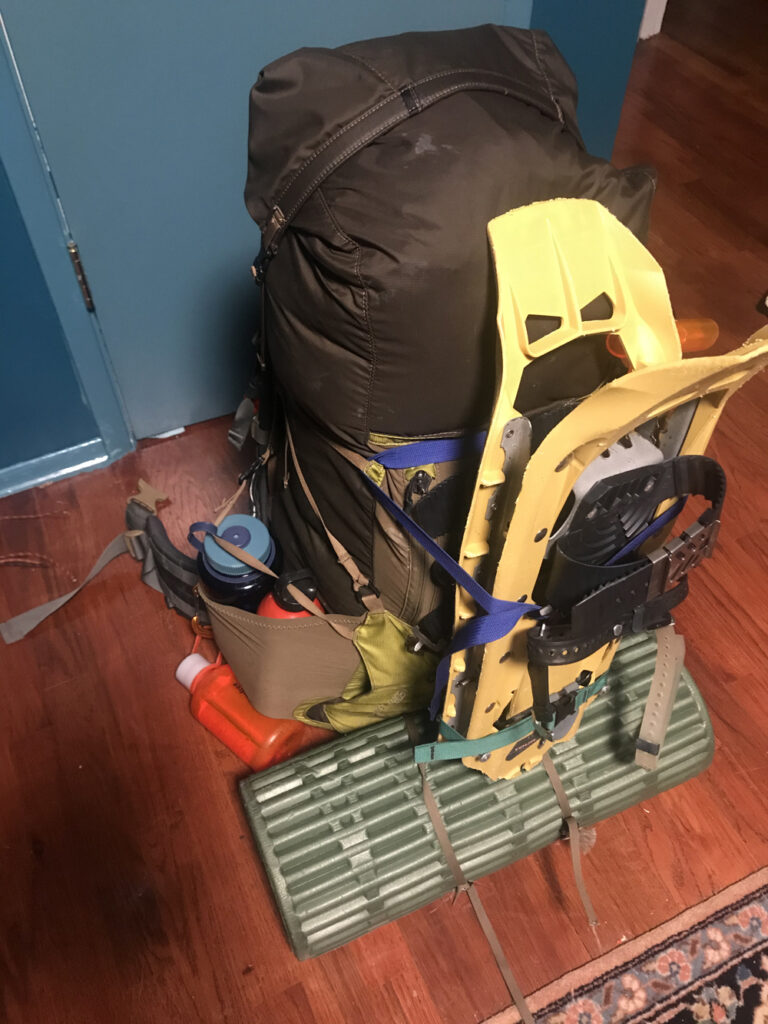
Everyone is different, and some people are willing to carry items that others wouldn’t. Many of the people who hike regularly with me in the winter make very different gear choices. Some hikers carry what seems to me to be huge amounts of water and food. Others bring luxuries such as compact chairs, large tents, down pants, down booties, camera tripods, etc. It’s fine for people to have different needs and preferences. For some trips, I too bring non-essential or luxury items.
Share your tips for dropping gear weight. Leave comments below.
